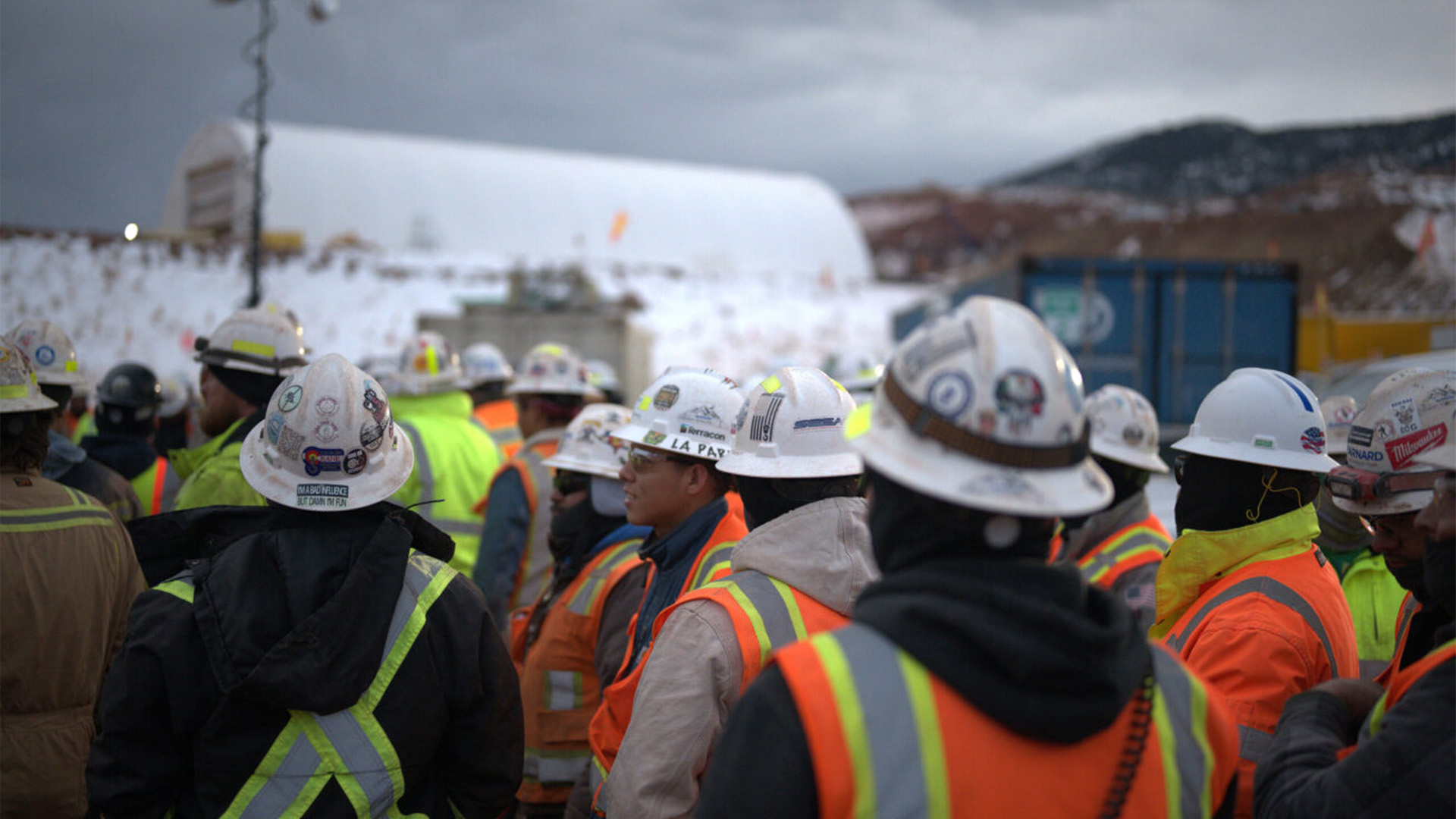Project superintendents and the safety team continually drive roads to evaluate the conditions, and if conditions deteriorate and begin to cause safety hazards that can’t be mitigated, on-site work will be shut down. As winter storms are expected, “adverse weather days” were included in the project timeline and budget. On these days, a majority of on-site construction will be suspended due to adverse conditions that pose a risk to safety and quality.
To prepare the site for the wintertime, roads and equipment are properly maintained, machinery is winterized as needed, and all personnel are equipped with appropriate cold-weather clothing, footwear and personal protective gear. Certain areas are also tented and heated to protect workers and materials. Crews have also constructed plexiglass sheds to protect flaggers from the elements, allowing these workers to continue to provide safe access on the haul roads while remaining comfortable at their job site. Two large challenges during the winter are the placement of asphalt and concrete in colder temperatures. For crews to place asphalt on the main dam, the forecast must be above freezing for a period long enough to complete one entire lift across the main dam. During the winter months, the goal is 10 lifts of asphalt (7.5 feet) each month. To ensure correct temperatures for concrete, crews use heating methods to keep it at a consistent temperature while it cures. Typically, a night shift crew monitors this work to remain within compliance of the site specifications.
Overall, the Front Range has experienced a mild winter season so far, though winter conditions are inevitably on their way. When the weather does roll in, crews will continue to monitor and adjust to continue regular and safe construction activities as much as possible.

